
Coffee is said to have originated in Ethiopia. Today Ethiopian coffee ceremonies are common after large meals, even at restaurants. Women will roast beans in front of the guests. Then she’ll grind the beans, perfuming the room, and brew them in a clay coffee pot, or jebena. The coffee is served in small cups called si’ni. Diners have their choice of salt or sugar.
Traditionally, every guest is offered 3 cupfuls- the same grounds being brewed each time, making each consecutive cup weaker.
My Rendition
At best, I was ill-prepared to perform an Ethiopian coffee ceremony. #1, I live in Tulsa, Oklahoma. #2, I lack every single piece of traditional Ethiopian coffee-making equipment there could possibly be. In fact, the only proper element I have is a bag of green coffee beans. Tilda’s parents brought them all the way over from Ethiopia, known as the birthplace of coffee.
At least the coffee was right. I got to work, putting my college nickname “MacGyver” to good use. What follows are the results of a free-spirited, improvisational coffee ceremony, done in the spirit, but perhaps not the likeness of a true Ethiopian coffee ceremony. I recommend you follow along in the spirit of discovery – no worries about equipment, make due with what you have. I promise you’ll have a blast.
Before we get started, let’s watch an Ethiopian woman prepare coffee.
Ingredients:
1/4 cup green coffee beans (makes about 4 Tbsp coffee grounds)
Method:
First, get your hands on some green coffee beans – a.k.a. unroasted coffee beans. Try calling your favorite local coffee shops – they might have the hook up.
Green coffee beans smell remarkably like any other raw bean – rather grassy. Aren’t they stunning?
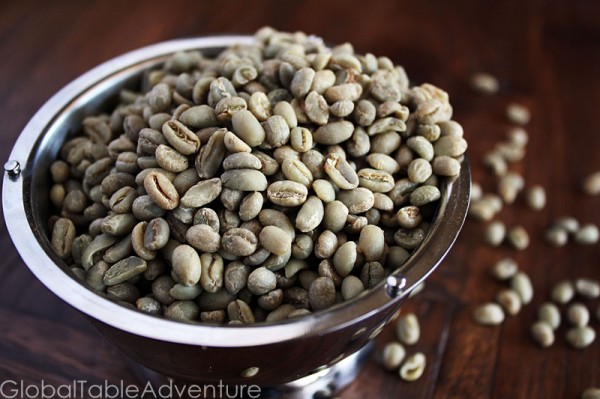
Next, wash the coffee beans in cool water. Pick through them like just like you would any other bean, removing any yucky looking specimens. They are very small.
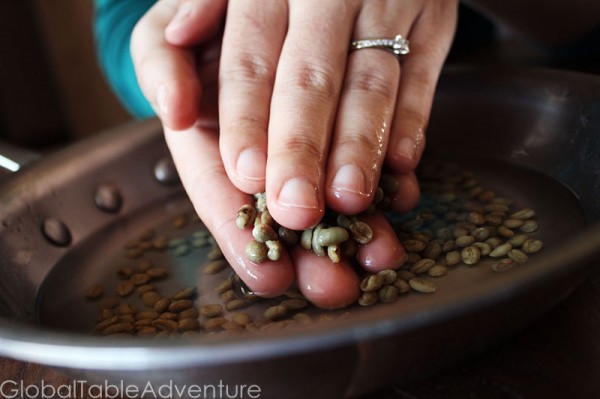
Pour off extra water and roast the beans in pan over medium/medium-low until popping and dark brown. Stir continuously with a wooden skewer or keep shaking the pan. Do not use a nonstick pan.
At first the moisture will steam off…

Then the pan will dry out and the beans will start turning golden brown… keep stirring.

The color will deepen …
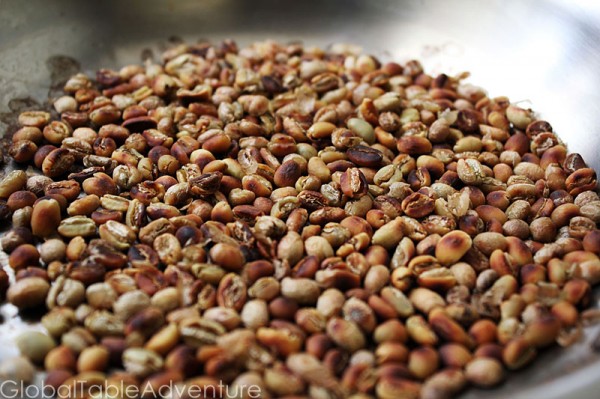
growing more and more brown with each shake or stir.
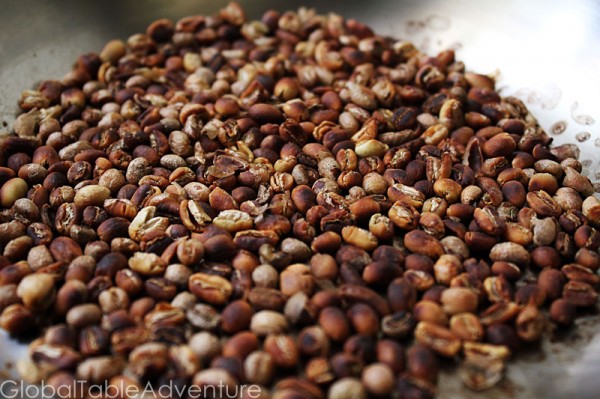
Eventually the beans start to take on a familiar dark brown color. About this time they’ll start to pop.
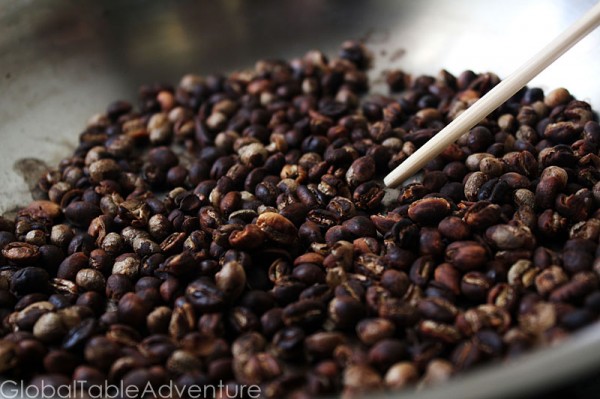
Go as dark as you’d like – there is no wrong answer, only what you like. Mine were nice and dark – the photo makes them look black but they were more of a deep brown.

Here it is … homemade roasted coffee, at a glance:
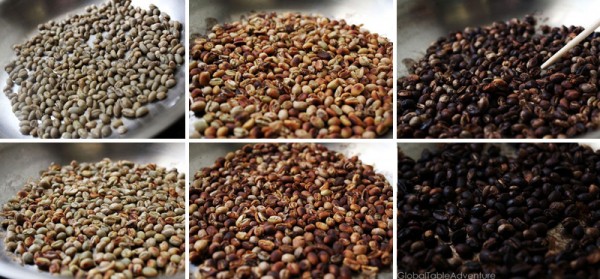
Now, let’s get serious. Pass the beans around and deeply breathe in the aroma. Take the time to celebrate… ooh and ahh over the wonderful scent. Try not to burn your nose. Don’t worry, they do this in the authentic ceremonies too.
The next step? Grind the beans. In urban parts of Ethiopia, restaurants now use coffee grinders, although traditional ceremonies continue to grind the beans by hand.
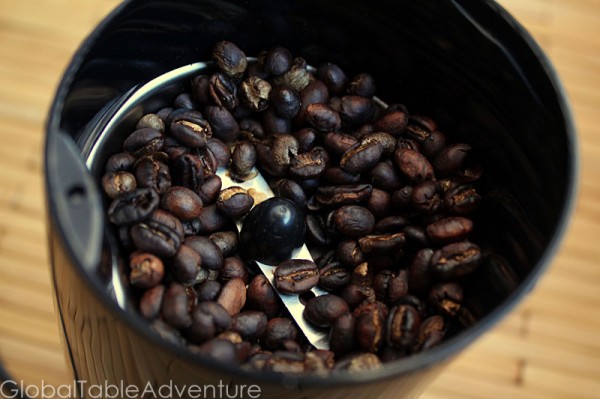
Gorgeous.

Next, pass the coffee around again and breathe in deeply.
I rather loved it.
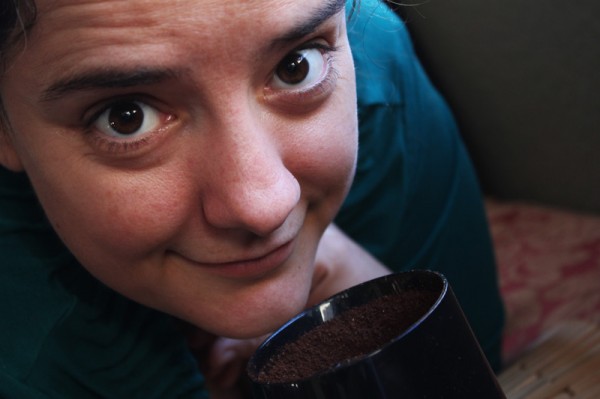
Mr. Picky? To put it delicately, he wasn’t so sure. Then again, he hates coffee.
I guess that just means more for me!
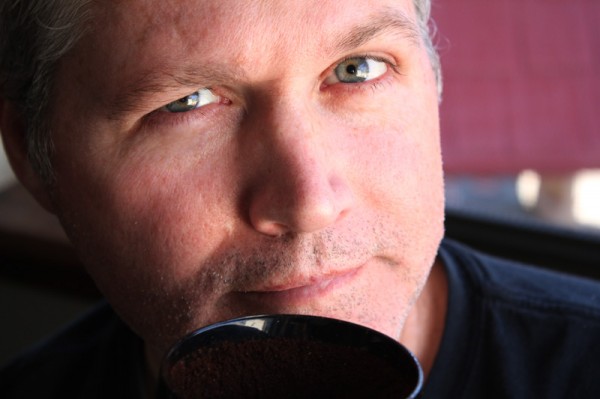
Would you like a whiff? Full bodied coffee, freshly roasted. I’m pretty sure there’s nothing better.
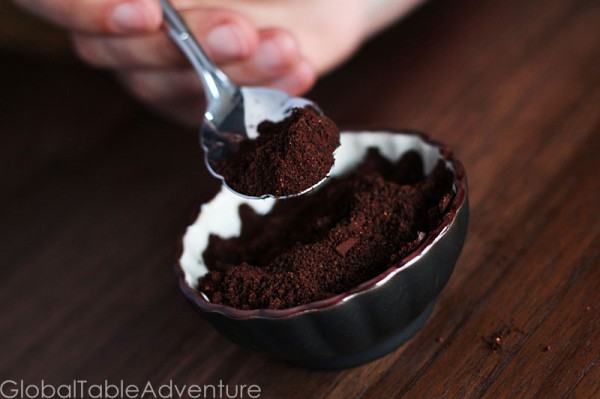
Next? In Ethiopia they use a jebena, or special clay coffee pot to brew the coffee. In a pinch, simply brew the coffee as you normally would. Some suggest that for every tablespoon of coffee grounds, you use 1 cup of water. I found this to be rather weak – not very suitable for Ethiopian coffee. Play around with works for you. Leave your recommendations in the comments.
Also, when you go to pour the coffee, you should try and pour it from very high up – maybe 8-10 inches. This traditional method makes a beautiful stream of dark coffee into the mug. Getting the pour can take … ahem… practice. Use water. I’ll spare you those pictures.

P.S. Be sure to serve in small cups with tons of sugar, a smile, and… oh, yes… popcorn. Tilda’s parents tell me when there is Ethiopian coffee, there is popcorn. Stay tuned. We’ll have that recipe up this weekend.
Enjoy!
| Servings |
| 4 people |
|
|
|
Coffee is said to have originated in Ethiopia. Today Ethiopian coffee ceremonies are common after large meals, even at restaurants. Women will roast beans in front of the guests. Then she’ll grind the beans, perfuming the room, and brew them in a clay coffee pot, or jebena. The coffee is served in small cups called si’ni. Diners have their choice of salt or sugar.
|
- 1/4 cup green coffee beans - OR -
- 4 Tbsp coffee grounds
- popcorn kernels (popped)
- Wash the coffee beans in cool water. Pick through them like just like you would any other bean, removing any yucky looking specimens. They are very small.
- Pour off extra water and roast the beans in pan over medium/medium-low until popping and dark brown. Stir continuously with a wooden skewer or keep shaking the pan. Do not use a nonstick pan. At first the moisture will steam off…then the pan will dry out and the beans will start turning golden brown… keep stirring until dark brown and beginning to pop.
- Grind the beans. In urban parts of Ethiopia, restaurants now use coffee grinders, although traditional ceremonies continue to grind the beans by hand.
- Next? In Ethiopia they use a jebena, or special clay coffee pot to brew the coffee. In a pinch, simply brew the coffee as you normally would. Some suggest that for every tablespoon of coffee grounds, you use 1 cup of water. I found this to be rather weak – not very suitable for Ethiopian coffee. Play around with works for you. Leave your recommendations in the comments.
- Also, when you go to pour the coffee, you should try and pour it from very high up – maybe 8-10 inches. This traditional method makes a beautiful stream of dark coffee into the mug.
- Be sure to serve in small cups with tons of sugar, a smile, and… oh, yes… popcorn.




Pingback: Global Table Adventure | Recipe: Stovetop Popcorn
Pingback: Global Table Adventure | Arabian Cardamom Coffee
Pingback: Coffee Ceremonies Around the World | Daily Shot Of Coffee
Pingback: Celebrating the Ethiopian New Year with Doro Wat
Pingback: The REAL reason why people put butter in their coffee
Pingback: Lucka 5 – kaffe | Exodusbloggen